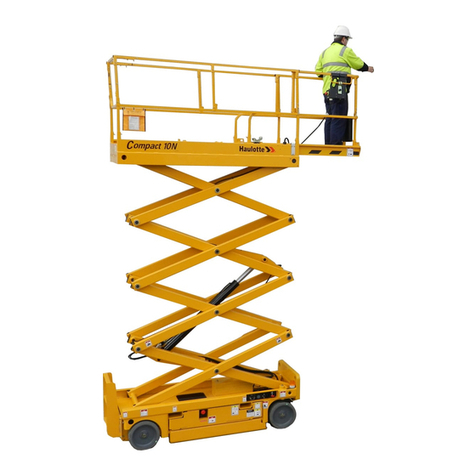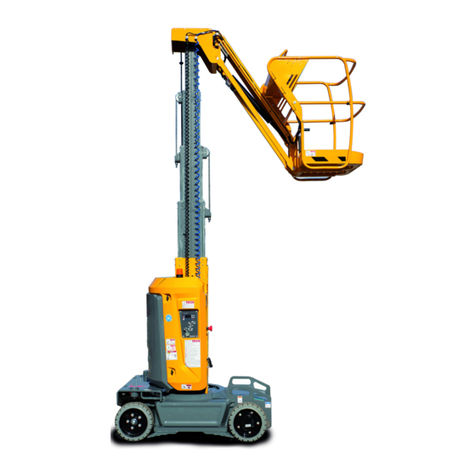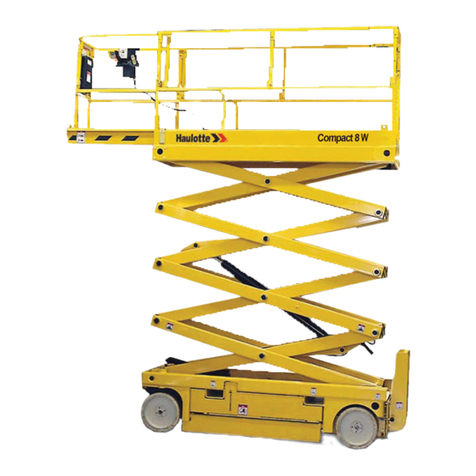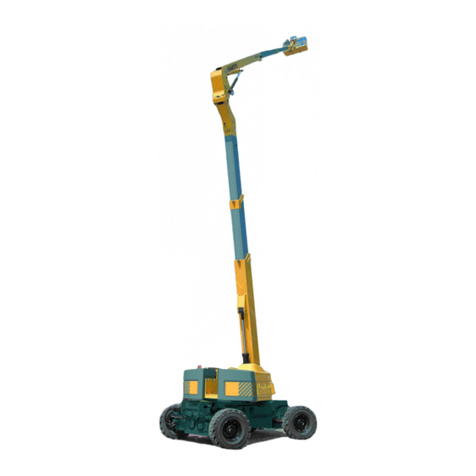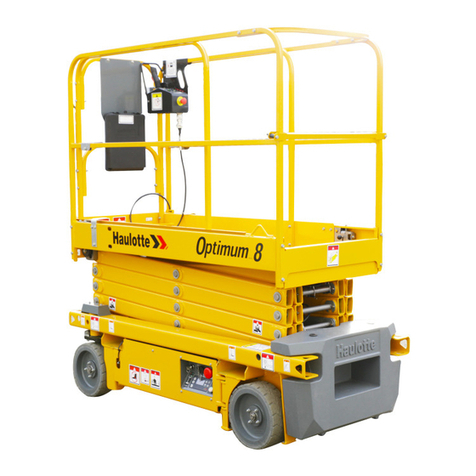
5
CONTENTS
Operator's manual
5 - Transportation . . . . . . . . . . . . . . . . . . . . . . . . .
72
5.1 - Transport configuration. . . . . . . . . . . . . . . . . . . . . . . . . . . . . . . . . . . . . . . . . 72
5.2 - Machine stowage for transport - STAR 10 - STAR 26J. . . . . . . . . . . . 72
5.3 - Unloading . . . . . . . . . . . . . . . . . . . . . . . . . . . . . . . . . . . . . . . . . . . . . . . . . . . . 73
5.4 - Towing. . . . . . . . . . . . . . . . . . . . . . . . . . . . . . . . . . . . . . . . . . . . . . . . . . . . . . . 73
5.4.1 - Electric brake release. . . . . . . . . . . . . . . . . . . . . . . . . . . . . . . . . 74
5.5 - Storage . . . . . . . . . . . . . . . . . . . . . . . . . . . . . . . . . . . . . . . . . . . . . . . . . . . . . . 75
5.6 - Loading by ramp . . . . . . . . . . . . . . . . . . . . . . . . . . . . . . . . . . . . . . . . . . . . . . 76
5.7 - Unloading by ramp . . . . . . . . . . . . . . . . . . . . . . . . . . . . . . . . . . . . . . . . . . . . 76
5.8 - Lifting operation . . . . . . . . . . . . . . . . . . . . . . . . . . . . . . . . . . . . . . . . . . . . . . . 77
5.8.1 - Loading and unloading . . . . . . . . . . . . . . . . . . . . . . . . . . . . . . . . 77
5.8.1.1 - Safety precautions . . . . . . . . . . . . . . . . . . . . . . . . . . . . . . . . . . . 77
5.8.1.2 - Necessary equipment. . . . . . . . . . . . . . . . . . . . . . . . . . . . . . . . . 77
5.8.1.3 - Preliminary procedures . . . . . . . . . . . . . . . . . . . . . . . . . . . . . . . 77
5.8.1.4 - Procedure for the use of slings. . . . . . . . . . . . . . . . . . . . . . . . . . 78
5.8.2 - Lifting operation with tie-down points on the mast . . . . . . . . . . . 79
5.8.2.1 - Safety precautions . . . . . . . . . . . . . . . . . . . . . . . . . . . . . . . . . . . 79
5.8.2.2 - Necessary equipment. . . . . . . . . . . . . . . . . . . . . . . . . . . . . . . . . 79
5.8.2.3 - Preliminary procedures . . . . . . . . . . . . . . . . . . . . . . . . . . . . . . . 79
5.8.2.4 - Procedure for the use of slings. . . . . . . . . . . . . . . . . . . . . . . . . . 80
5.9 - Loading and unloading with forklift. . . . . . . . . . . . . . . . . . . . . . . . . . . . . . . 81
6 - Cold Weather Recommendations . . . . . . . . . .
82
6.1 - Environmental conditions. . . . . . . . . . . . . . . . . . . . . . . . . . . . . . . . . . . . . . . 82
6.1.1 - Hydraulic oil . . . . . . . . . . . . . . . . . . . . . . . . . . . . . . . . . . . . . . . . 82
7 - Battery care and maintenance . . . . . . . . . . . .
83
7.1 - Battery recharge . . . . . . . . . . . . . . . . . . . . . . . . . . . . . . . . . . . . . . . . . . . . . . 83
7.1.1 - On-board charger. . . . . . . . . . . . . . . . . . . . . . . . . . . . . . . . . . . . 83
7.1.2 - Battery charging . . . . . . . . . . . . . . . . . . . . . . . . . . . . . . . . . . . . . 85
7.2 - Battery care and maintenance. . . . . . . . . . . . . . . . . . . . . . . . . . . . . . . . . . 87
7.2.1 - Filling batteries . . . . . . . . . . . . . . . . . . . . . . . . . . . . . . . . . . . . . . 87
7.2.1.1 - Procedure to fill the batteries automatically . . . . . . . . . . . . . . . . 87
7.2.2 - Desulfation charge . . . . . . . . . . . . . . . . . . . . . . . . . . . . . . . . . . . 88
7.3 - Optimise battery life. . . . . . . . . . . . . . . . . . . . . . . . . . . . . . . . . . . . . . . . . . . . 89
E
GENERAL SPECIFICATIONS
1 - Machine dimensions . . . . . . . . . . . . . . . . . . . .
91
2 - Major component masses . . . . . . . . . . . . . . . .
92
3 - Acoustics and vibrations. . . . . . . . . . . . . . . . .
92
4 - Wheel/Tire assembly . . . . . . . . . . . . . . . . . . . .
93
4.1 - Technical specifications . . . . . . . . . . . . . . . . . . . . . . . . . . . . . . . . . . . . . . . . 93
4.2 - Inspection and maintenance. . . . . . . . . . . . . . . . . . . . . . . . . . . . . . . . . . . . 93
5 - Options . . . . . . . . . . . . . . . . . . . . . . . . . . . . . . .
95
5.1 - Activ' Shield Bar - SECONDARY GUARDING SYSTEM (If fitted) . 95
5.1.1 - Description . . . . . . . . . . . . . . . . . . . . . . . . . . . . . . . . . . . . . . . . . 95
5.1.2 - Characteristics . . . . . . . . . . . . . . . . . . . . . . . . . . . . . . . . . . . . . . 96
5.1.3 - Safety precautions . . . . . . . . . . . . . . . . . . . . . . . . . . . . . . . . . . . 97
5.1.4 - Pre-operation inspection . . . . . . . . . . . . . . . . . . . . . . . . . . . . . . 98
5.1.5 - Operation . . . . . . . . . . . . . . . . . . . . . . . . . . . . . . . . . . . . . . . . . . 98
5.1.6 - Specific decals . . . . . . . . . . . . . . . . . . . . . . . . . . . . . . . . . . . . . 99




